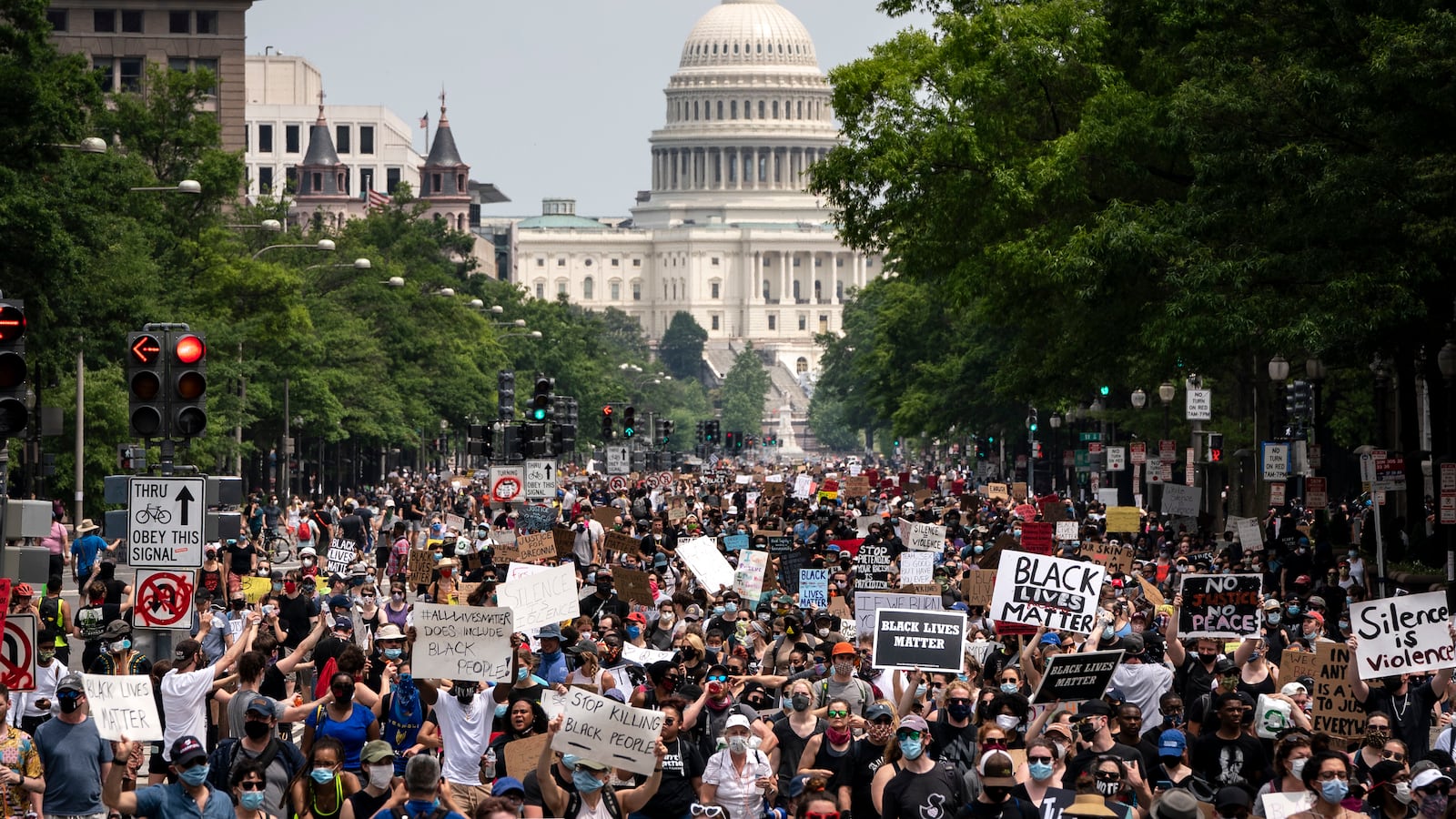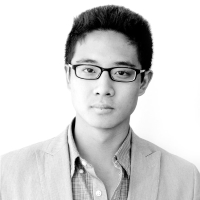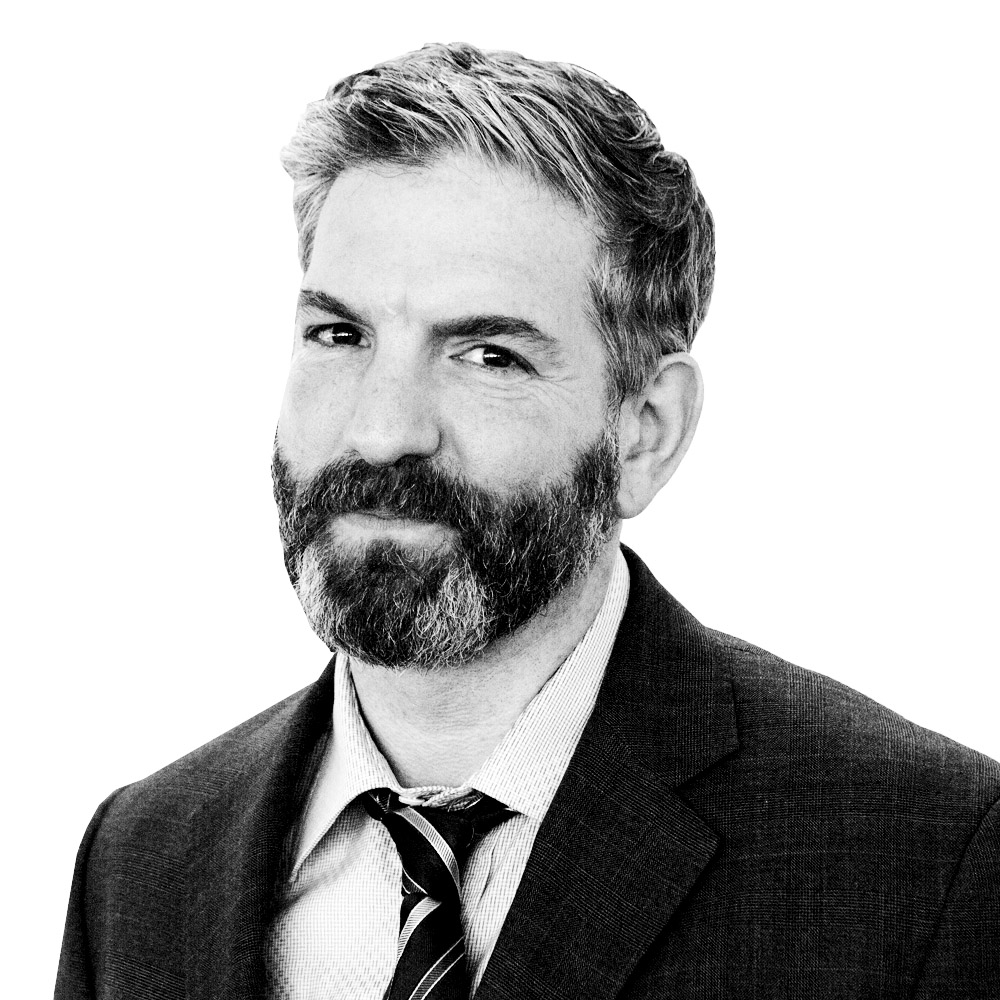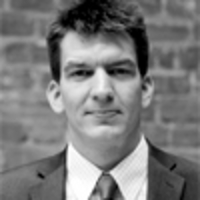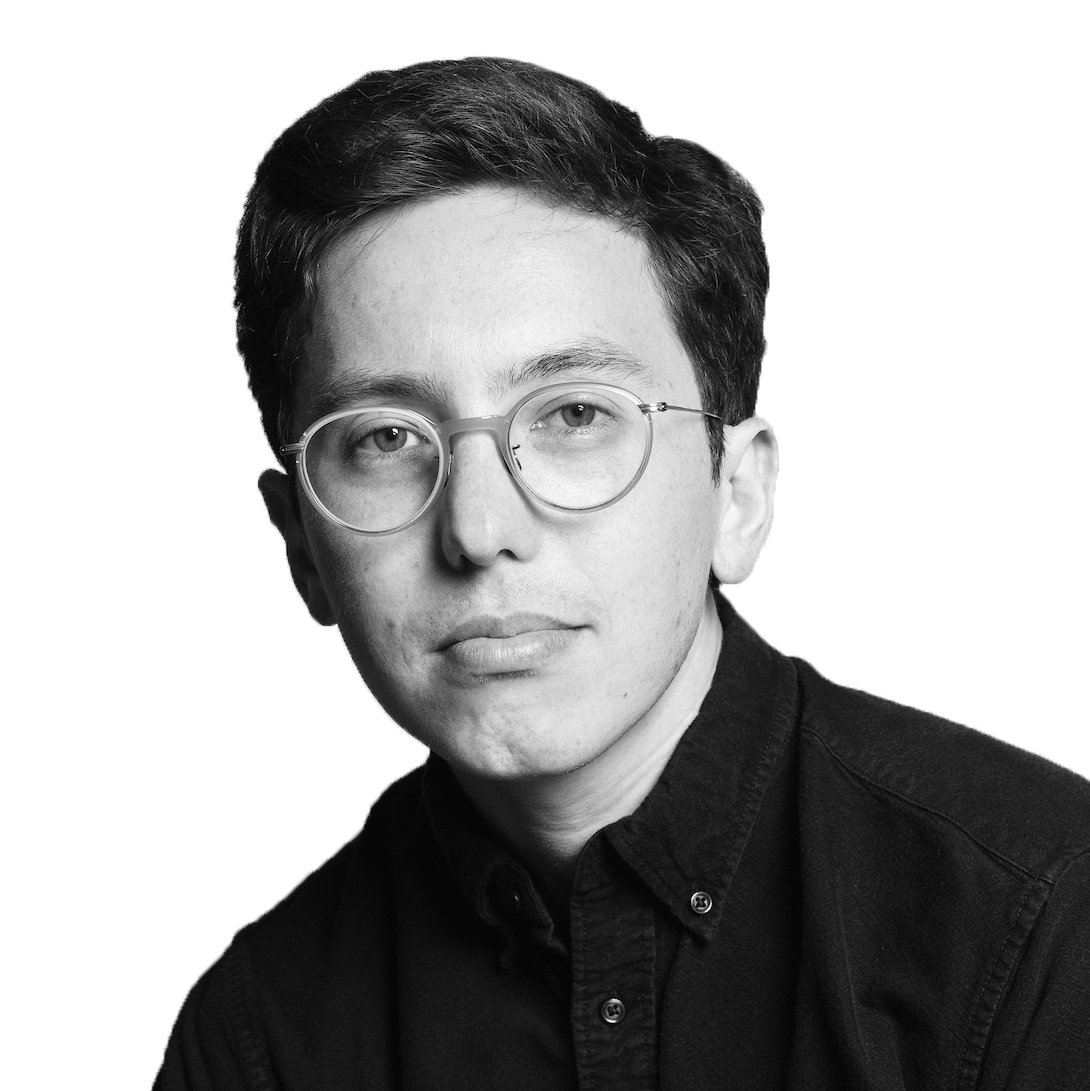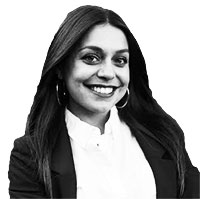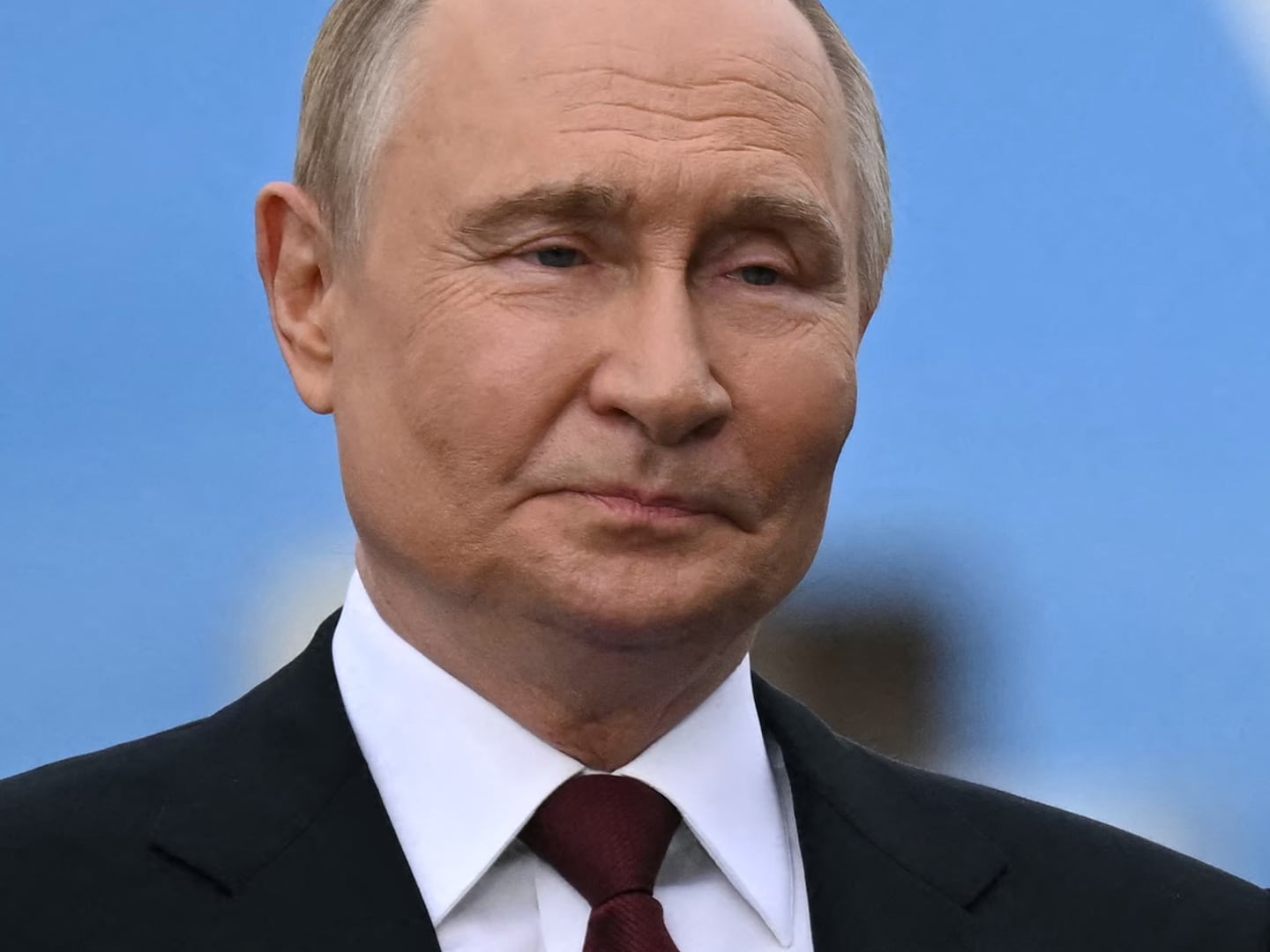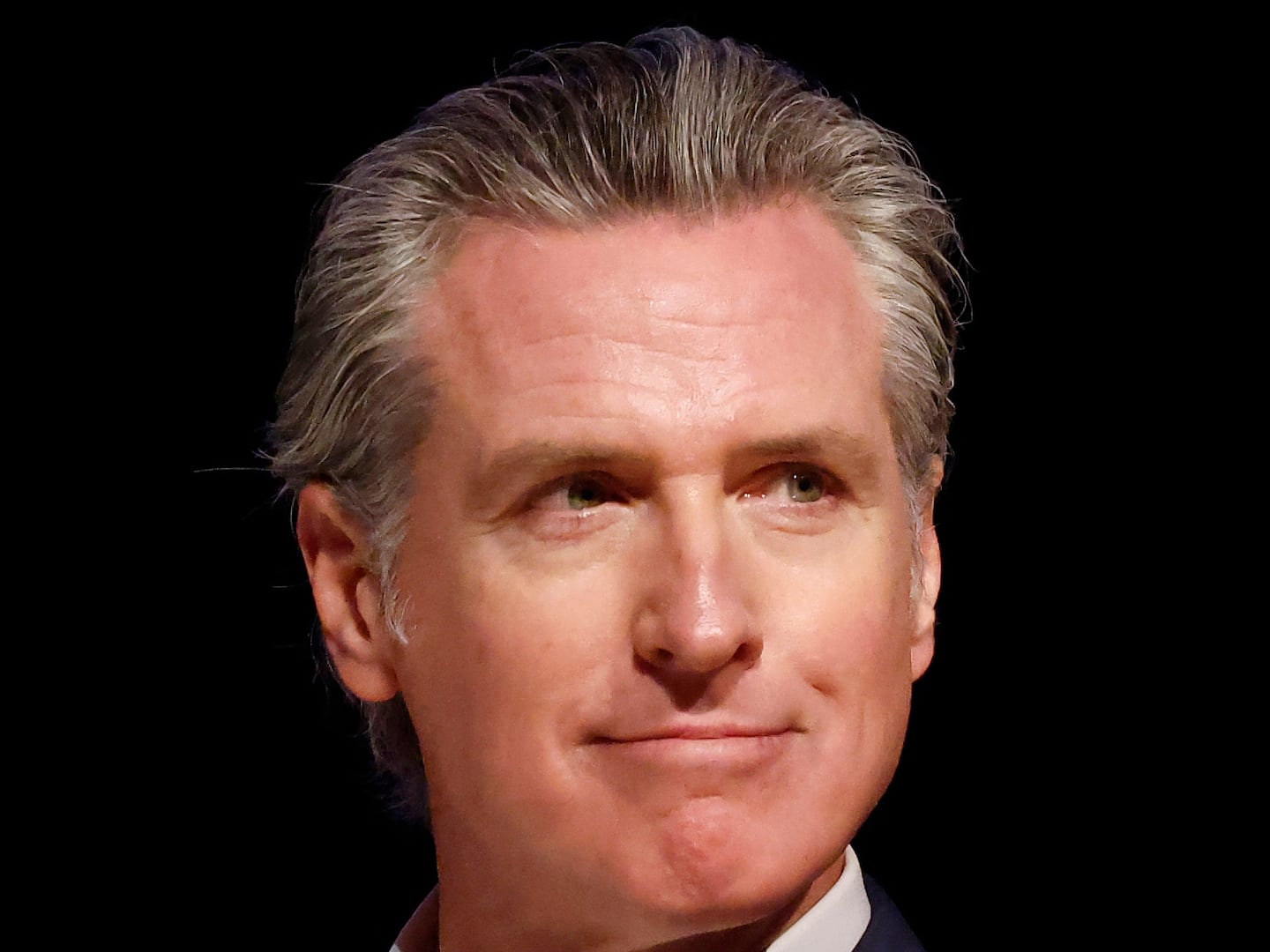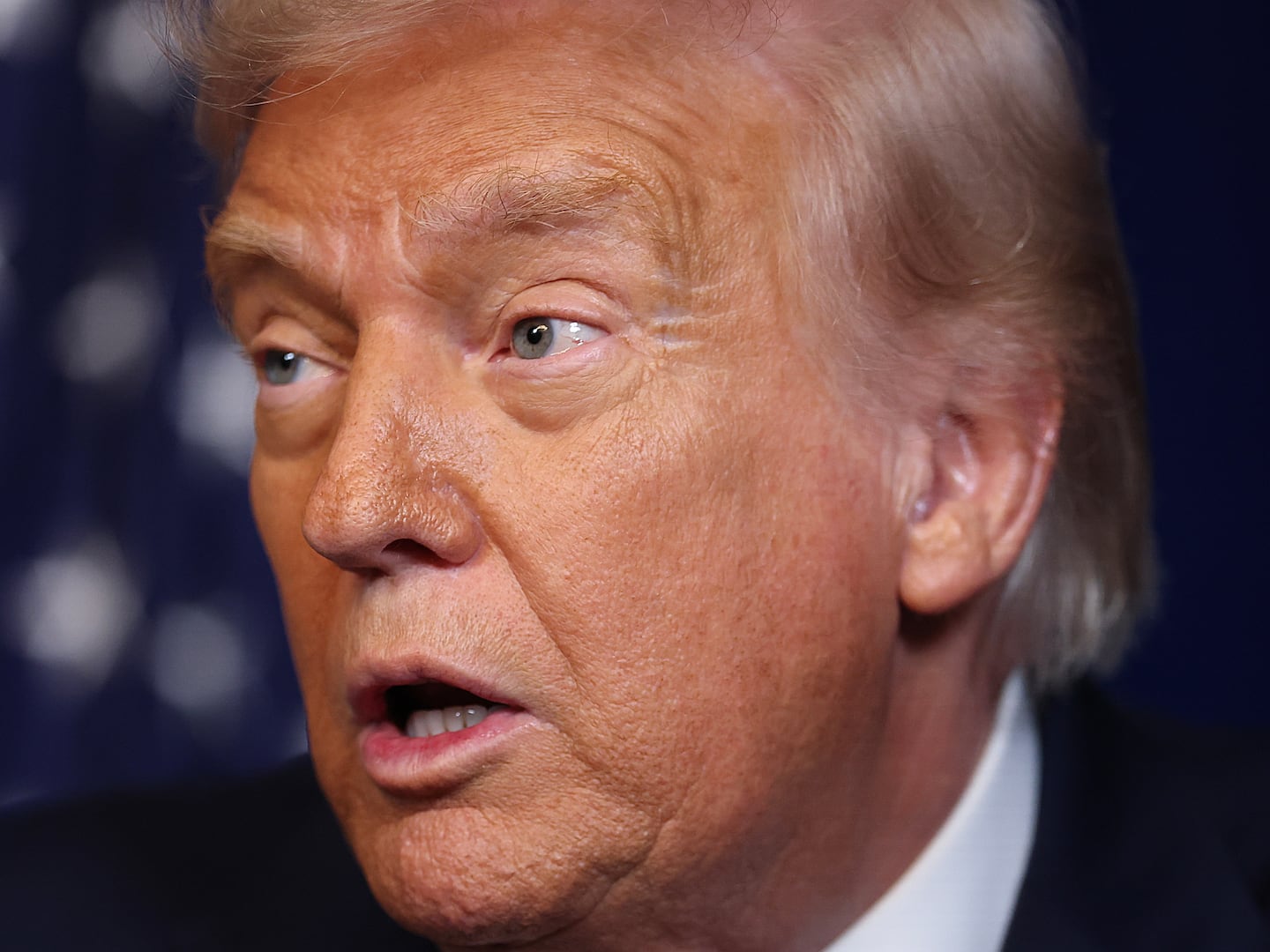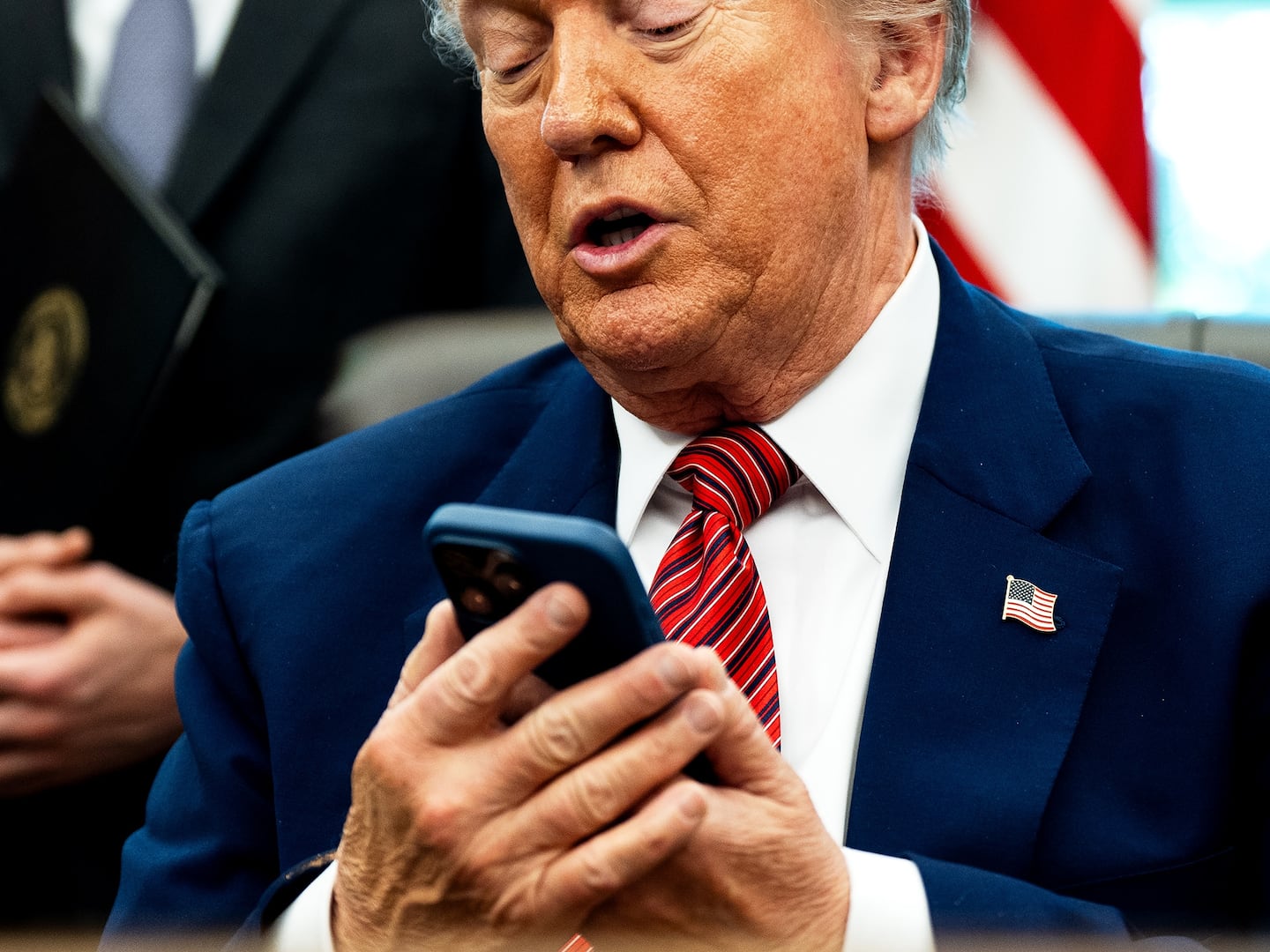Despite police crackdowns, curfews, boiling heat, rain, and fears of a global pandemic that continues to plague America, huge crowds of protesters swelled to their largest size yet on Saturday in some of the country’s biggest cities.
On the 11th day of nationwide protests sparked by the killing of George Floyd at the hands of Minneapolis police, tens of thousands of demonstrators descended on Union Park in Chicago, downtown Philadelphia, New York City, San Francisco, and Seattle.
Thousands converged in Washington, D.C., where protesters covered a metal fence recently erected around the entire perimeter of the White House with banners and posters calling for an end to police brutality and racism.
Trump did not make any public appearances, instead blasting out a random “LAW & ORDER!” tweet while totally peaceful demonstrations were underway. Later, he reminded the nation he never was very good at crowd estimates, proclaiming that the protests in the nation’s capital were “much smaller” than anticipated.
Across the nation, the almost festival-like marches and rallies provided a jarring contrast to footage of hundreds of police officers cheering outside a Buffalo, New York, courthouse that morning, in support of two colleagues charged with second-degree assault for shoving a 75-year-old protester to the ground two days earlier.
There were no reports of major clashes between crowds and law enforcement, with the exception of scuffles between demonstrators and police in Seattle that ended an otherwise peaceful day of protest in the city.
In Washington, there were no low-flying National Guard helicopters, like the ones that had buzzed demonstrators earlier in the week—reportedly on orders of the Pentagon. And in New York, where officials have been under fire over scenes of cops surging against curfew breakers and hitting them with batons, there were close calls, but they ended in de-escalation. At one point after curfew, the situation in Brooklyn seemed bound to spin out of control.
As a crowd of protesters merged at Eastern Parkway and Brooklyn Avenue, a dozen NYPD vans rushed east, lights blaring. Squads of riot cops assembled, putting on their helmets and swinging their batons, primed for action. A protester climbed the lamppost at the intersection, while a hundred or so protesters lay down in the street. It became clear that there was an equal number of cops on the west side of the junction: The activists were penned in.
Earlier in the week, scenes like this one had ended in violent climaxes, with NYPD officers attacking, clubbing, and pepper-spraying protesters who were guilty of … well, of not much. “The aggression—it literally came out of nowhere. I’d kept thinking someone must have hit a cop, but that was never the case,” said Jumaane Williams, a local activist who now serves as New York City’s Public Advocate. This corner seemed ripe for a replay on Saturday night.
“Come back tomorrow, they will arrest you,” one protester shouted. “Time to disperse! If you need water or shelter follow me!” another yelled.
But no one left. And there was no confrontation. While chants of “fight another day,” erupted, Williams and a local city councilman huddled with the police commanders on scene. After a few minutes, an agreement was set: the marchers could continue north. Most chose to hang around instead—a man was being cuffed for attempting to run over some protesters, and they decided to shout some suggestions about what ought to happen to him at the prison at Riker’s Island.
Scenes not dissimilar to this played out all over Brooklyn on Saturday night, with the police keeping their distance, and even making tactical truces with the protesters calling for their reform, defunding, and even abolition. “At least right here, right now, there’s been some pullback,” Williams said. “The cops are giving us some space.”
“I’ve seen the protesters self-regulate, too,” added Williams. One woman was getting too aggressive in how she approached the cops; the protesters circled around her to prevent a confrontation. Some activists threw garbage on the streets they were marching through; others cleaned up the trash.
Asked who was responsible for pulling the police back, New York's second highest-ranking public official responded: “I don't know who's in charge.”
Throughout the day, many marchers made the protests a family affair. “I’m letting them learn right here, in person. I want them to see firsthand that it’s not just black people fighting for them. We’re all family,” said Demetrius Oliver, 38, who bought his three young children to a march in Philadelphia.
The importance of demanding change for the next generation was echoed by demonstrators in other cities.
“I wanted him to see what it is to protest and that he has to stand up for his rights, because he has rights,” said Stacey Samuels, a nurse practitioner who attended a protest in Brooklyn with her 11-year-old son.
“I think the crescendo is building,” she said of the huge turnout at protests across the country.

“My whole life has been spent trying to keep my sons from being killed and out of the school-to-prison pipeline. Seven of their friends were killed, two by police. One when police were dispersing a crowd and another when he was being chased for missing a court date and crashed. The police don’t act like that in white communities,” said Tevis Duncan, who took part in a demonstration in Louisville, Kentucky.
“I want a future that I can be proud of for my children,” said Chad Nasr, a 24-year-old grad student in Louisville.
Heather Orsini, who lives in New Jersey, marched in Philly with a sign that read, “If the shooting starts, get behind me.” She told The Daily Beast: “I know that things have been getting crazy and I want my friends to know they’re protected. That I’ll protect them.”

Following days of unrest stoked by an at-times irritated and defiant President Trump, Washington, D.C. officials said they expected Saturday to mark the biggest turnout yet.
Around 2 p.m. huge crowds gathered in front of Congress and the Supreme Court and chanted the names of the victims of police brutality.
Some came with portable speakers, blasting audio of speeches from such black leaders as Martin Luther King, Jr. and Malcom X. Onlookers offered “free water, free snacks!” and complimentary hand sanitizer in the 90 degree heat.
A casually dressed Sen. Ron Wyden (D-OR) greeted waves of protesters passing between two Senate office buildings, handing out bottles of water and Kind bars.
“I think members of Congress need to support peaceful protests,” he told The Daily Beast, saying the crowds sent “an incredibly powerful message of unity.”
Kimberly Walker, 28, from Maryland, and some other licensed therapists set up a table outside St. John’s Episcopal Church, the church across from the White House that Trump used to stage his pointless Monday photo op. They were offering free protein bars, fresh fruit, and water to protesters.
“We noticed that there was a need, that while the protests were happening... a lot of people were getting really emotional. We just wanted to kind of be out here to de-escalate everybody,” Walker said. The group, who called themselves Social Workers 4 Justice said they were offering 10 minute therapy sessions and had, moments earlier, spoken to a distraught woman.
“She’s like, ‘Nobody listens to me. They don’t help me. They don’t have any resources for me,’” Walker said. “And I said, ‘What is it that you need? Let’s write it down.’ We got a notepad out. We took some notes and then we gave her our information.”
As the march passed Trump International Hotel on Pennsylvania Ave.—just a few blocks from the White House—a long line of protesters started lustily booing and shouting at the wall of security and police flanking the president’s hotel. They shouted, “Fuck Donald Trump” and “Vote him out!” Others opted to walk past silently, middle fingers raised high at the president’s namesake.
Many demonstrators made clear they blamed the president for encouraging racism.
“We are tired of the blatant racism in this country and Trump incited it. This had been coming for a while. We expect change,” Annette Bridges, 67, told The Daily Beast in Louisville.
At a public memorial held for Floyd in Raeford, North Carolina, on Saturday as protests were underway, a local sheriff called on fellow law enforcement officers to listen to protesters and realize that “we are part of the problem.”
“Enough. Don't let the life of George Floyd be in vain. It has become a sacrifice,” Hoke County Sheriff Hubert Peterkin said at the memorial service, held 12 days after white Minneapolis cop Derek Chauvin held his knee on Floyd’s neck until he lost consciousness and died.
A vigil was also held for Breonna Taylor in Louisville, Kentucky on Saturday, a day after she would have turned 27 had she not been gunned down in a botched “no-knock” police raid in March. An EMT, she was asleep when she was shot eight times in her own home.

Taylor’s death sparked protests and an FBI investigation, but even the outrage over her death was not enough to stop other cases of excessive force by police, a fact which protesters have said makes them more determined to keep protesting.
“Don’t forget while we were peacefully protesting they killed David McAtee,” Sadiqa Reynolds, the head of the Louisville Urban League, said at Saturday’s vigil. McAtee, a black restaurant owner in Louisville, was fatally shot by authorities during protests earlier this week after he allegedly fired a gun.
“Breonna was an essential worker. Everyday her mother prayed for her to make it home. But imagine that your baby makes it home and the police break through the door and shoot. What do you say? You say no justice, no peace,” Reynolds said.
Demonstrators sang happy birthday in honor of Taylor and chanted her name, with plans for the crowd to release balloons to pay tribute.

In New York City, where the streets were flooded Saturday with people coming together and sharing free food and drinks with demonstrators, there was a strong sense of hope after nearly two weeks of unrest.
“There was a Muslim community that came out and prayed a few days ago. Yesterday the Jewish community was out here holding hands. People are realizing that this is a movement, this is a revolution, the last time this happened was with Martin Luther King. This is our time. People are losing patience, they’re losing hope, they don’t want to live in fear. They want to live equal,” said Sami Rahman, attending a protest in Brooklyn.
“I couldn’t sit home and watch TV.”
